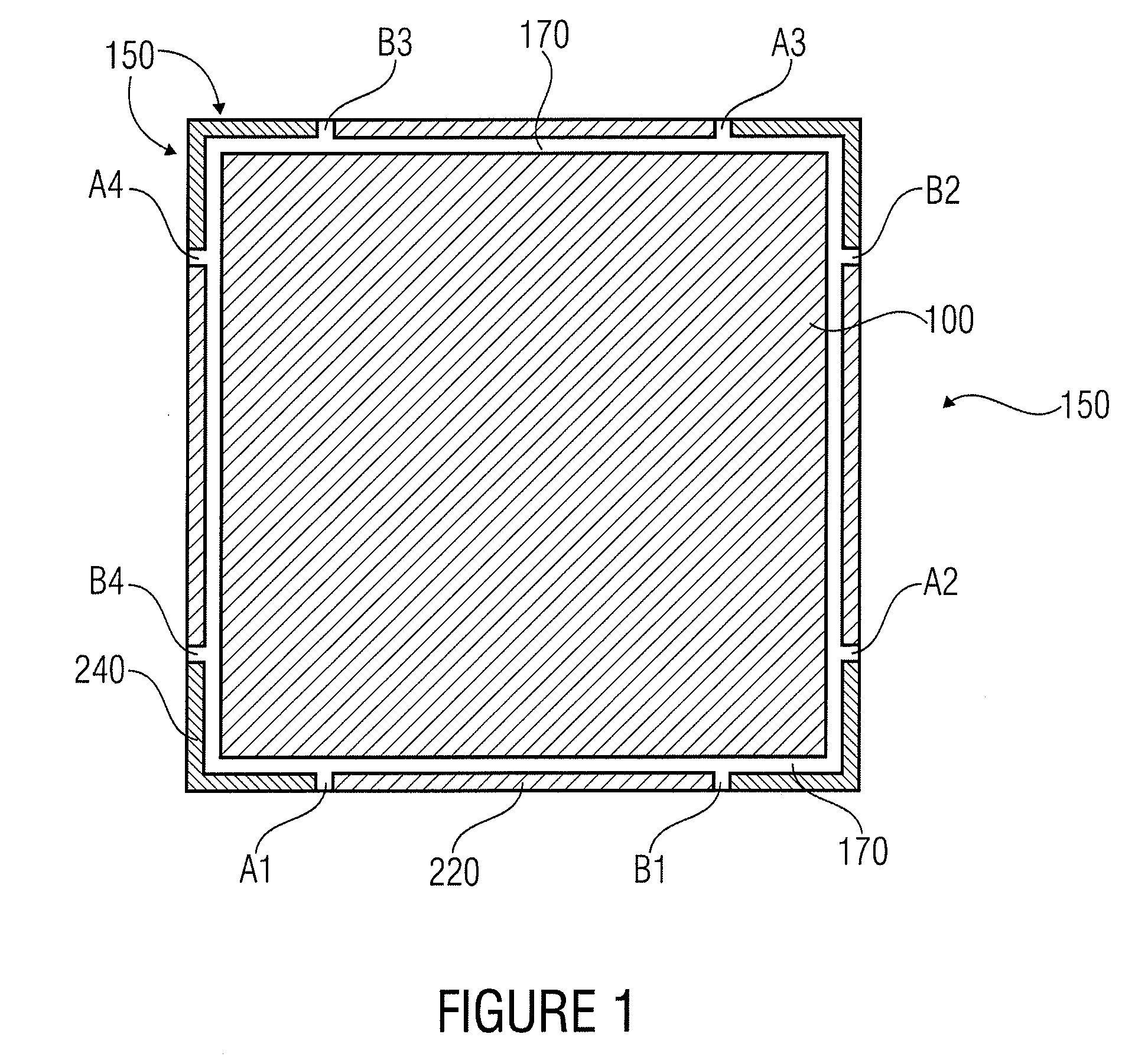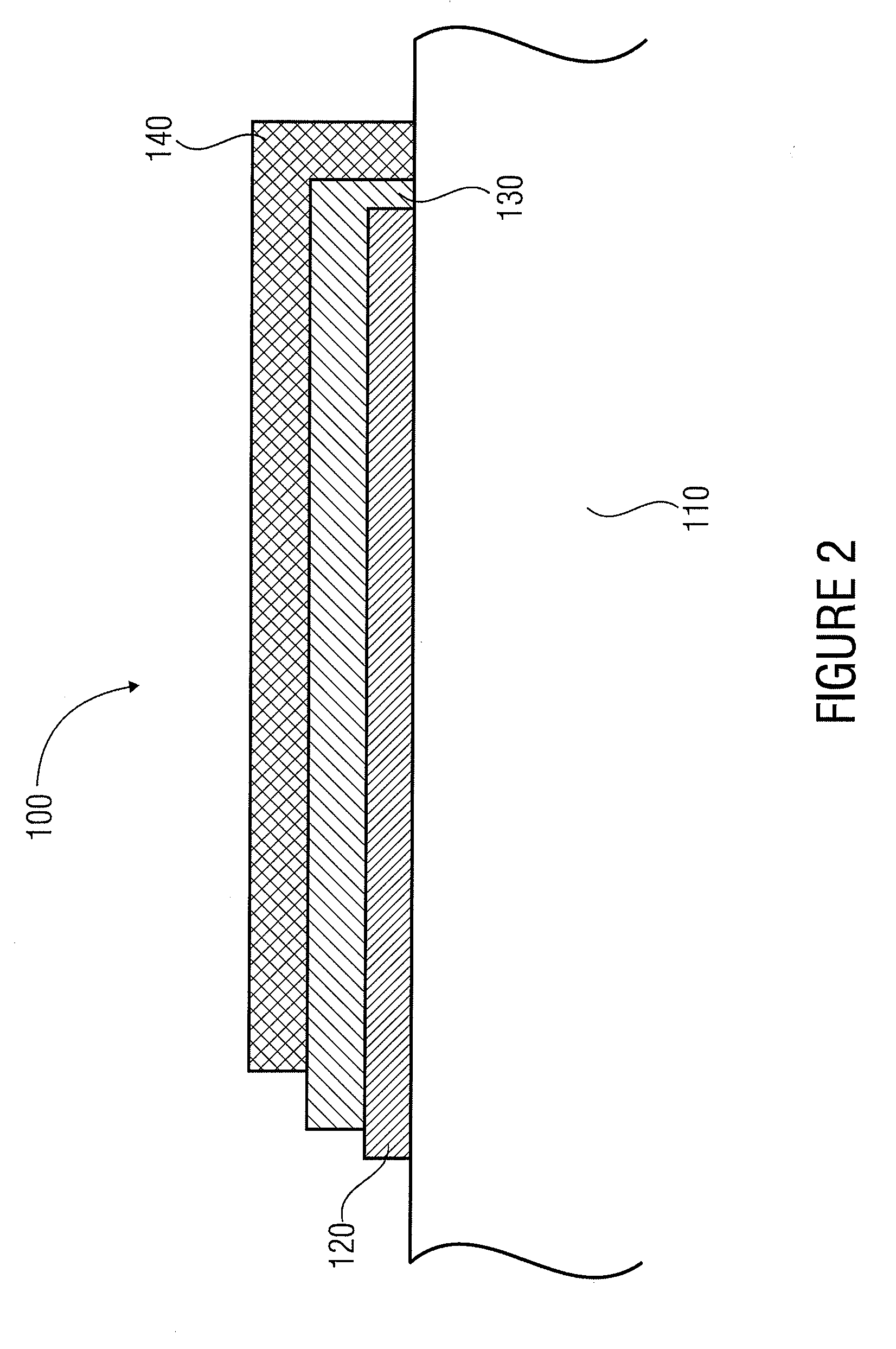Flat Lighting Devices and Method of Contacting Flat Lighting Devices
- Summary
- Abstract
- Description
- Claims
- Application Information
AI Technical Summary
Benefits of technology
Problems solved by technology
Method used
Image
Examples
Embodiment Construction
[0042]Before discussing the present invention in more detail below with reference to the drawings, it shall be noted that identical elements in the figures are designated by identical or similar reference numerals, and that repeated descriptions of said elements have been omitted.
[0043]FIG. 1 shows a schematic top view of a flat lighting device having a layer arrangement 100 which comprises a flat shape and is limited by an edge 150, which may also be implemented as an edge region. In this embodiment, the flat shape is implemented as a square, so that there is a rotational invariance toward rotations by an angle α=90°. In addition, the flat lighting device comprises an anode contact region 220 and a cathode contact region 240, the anode and cathode contact regions 220, 240 being implemented along the edge 150 and contacting the layer arrangement 100.
[0044]In the embodiment shown in FIG. 1, the cathode contact regions 240 are implemented at the corner points of the square shape of th...
PUM
 Login to View More
Login to View More Abstract
Description
Claims
Application Information
 Login to View More
Login to View More - R&D
- Intellectual Property
- Life Sciences
- Materials
- Tech Scout
- Unparalleled Data Quality
- Higher Quality Content
- 60% Fewer Hallucinations
Browse by: Latest US Patents, China's latest patents, Technical Efficacy Thesaurus, Application Domain, Technology Topic, Popular Technical Reports.
© 2025 PatSnap. All rights reserved.Legal|Privacy policy|Modern Slavery Act Transparency Statement|Sitemap|About US| Contact US: help@patsnap.com



